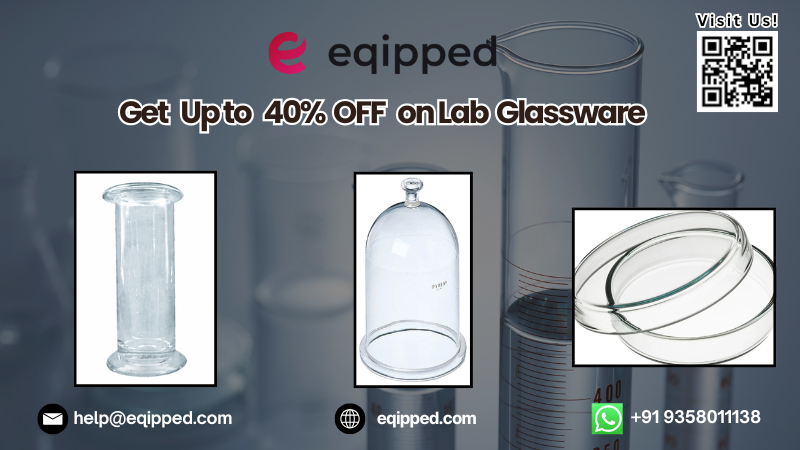Laboratory Glassware: Importance, Educational Applications, and Modern Trends in Science Learning

Laboratory glassware is one of the most fundamental and recognizable components of any scientific setup. Whether in schools, colleges, or advanced research institutions, laboratory glassware plays a vital role in conducting experiments, demonstrations, and analyses. From test tubes and beakers to flasks, burettes, pipettes, and condensers, glassware forms the backbone of practical science education. As modern education increasingly emphasizes experiential and hands-on learning, the use of laboratory glassware has become a trending topic among educators, researchers, and policymakers. It is not just equipment—it is a symbol of exploration, curiosity, and discovery in the world of science.
In schools, laboratory glassware introduces students to the basics of experimentation. When students first handle a test tube, measure a solution in a graduated cylinder, or observe a reaction in a beaker, they experience science in its most tangible form. These early interactions teach them essential skills such as accuracy, observation, and safety. For example, simple chemistry experiments like mixing acids and bases, or physics activities involving fluid measurements, rely entirely on glassware. Teachers use glass beakers, flasks, and droppers to demonstrate concepts that are otherwise difficult to visualize through textbooks alone. The use of laboratory glassware thus transforms science education from theoretical to practical, making learning more interactive and engaging for students at the school level.
At the college and university level, the use of laboratory glassware becomes more sophisticated. Students pursuing degrees in chemistry, biology, biotechnology, and environmental science depend heavily on precise glassware for complex experiments. Laboratory glassware like volumetric flasks, burettes, pipettes, and condensers enable students to conduct titrations, synthesize compounds, and analyze samples with high accuracy. In research-based programs, advanced glassware such as distillation apparatus, separating funnels, and chromatography columns are used to study reactions, purify compounds, and identify unknown substances. These hands-on experiments help students develop professional laboratory skills that are essential for scientific careers. Colleges also use laboratory glassware to teach standard procedures followed in industries such as pharmaceuticals, chemical manufacturing, and environmental testing.
One of the most important educational trends today is STEM learning (Science, Technology, Engineering, and Mathematics). Laboratory glassware forms a crucial component of the “Science” in STEM, enabling students to apply theoretical principles through experiments. For instance, using a volumetric flask teaches precision and calibration, while observing reactions in conical flasks develops understanding of chemical kinetics. STEM-based education encourages students to experiment, observe, and innovate—and laboratory glassware serves as the foundation for this type of inquiry-based learning. By providing students with hands-on experience, schools and colleges help nurture analytical thinking, teamwork, and problem-solving abilities—all essential for future scientists and engineers.
Another growing trend is the integration of safety and sustainability in laboratories. While traditional glassware has always been favored for its resistance to heat, chemical stability, and transparency, modern institutions are adopting reinforced and borosilicate glassware that offers greater durability and safety. Borosilicate glass, for example, can withstand high temperatures and thermal shock, making it ideal for heating and cooling experiments. Additionally, with the rise of environmental awareness, schools and colleges are promoting the use of reusable glassware instead of disposable plastics. This sustainable approach not only reduces waste but also teaches students the importance of environmental responsibility in scientific practices. The shift toward eco-friendly laboratory practices reflects a broader global trend toward sustainable science education.
Precision and accuracy are two of the key learning outcomes associated with laboratory glassware. Students learn to measure liquids using pipettes and burettes with careful attention to detail, developing patience and discipline. These skills extend beyond chemistry or biology—they are foundational habits for any scientific or engineering field. When students learn to read meniscus levels, calculate concentrations, and record observations, they also learn how to approach data systematically and think critically about results. This experiential learning process builds confidence and strengthens their understanding of scientific methods.
The use of modern laboratory glassware is also evolving with technological advancements. Today, many laboratories combine traditional glassware with digital tools like automatic pipettes, electronic burettes, and sensors that measure temperature, pressure, or reaction rates. Some schools and colleges are even introducing smart laboratories where sensors are integrated into glass apparatus to record data automatically. This merging of traditional and digital tools helps students experience the future of science firsthand. It also prepares them for working in industries that increasingly rely on automation and precision instrumentation.
In biology and environmental science, laboratory glassware continues to hold tremendous educational value. Microscopic slide preparation, specimen staining, and solution preparation all rely on glassware. Students use petri dishes, culture flasks, and test tubes to study microorganisms, plant tissues, and animal cells. In environmental labs, glass bottles and sample containers are used to collect and analyze air, water, and soil samples. By using laboratory glassware, students gain an appreciation for real-world applications of science, such as pollution monitoring, food testing, and pharmaceutical development. These practical lessons connect academic learning to global issues, inspiring students to pursue meaningful scientific solutions.
Another trending concept in education is interdisciplinary learning, and laboratory glassware supports this approach beautifully. In physics, for example, glass capillary tubes and measuring cylinders help study properties of fluids and gases. In chemistry, they are used to understand molecular interactions and reactions. In biology, they assist in observing cellular structures. This overlap of disciplines encourages students to see science as a connected system rather than isolated subjects. Laboratory glassware, therefore, becomes a bridge between chemistry, biology, and physics, promoting a holistic understanding of science.
Safety education is another crucial area tied to the use of laboratory glassware in schools and colleges. Students are taught how to handle glassware properly—never using cracked equipment, heating glass evenly, or cleaning apparatus after each experiment. These lessons not only ensure safety during experiments but also instill responsibility and professionalism. Teachers use these opportunities to emphasize lab ethics, teamwork, and respect for equipment. By learning to use laboratory glassware responsibly, students develop a sense of care that extends to their broader approach toward science and research.
With increasing focus on project-based and inquiry-driven learning, laboratory glassware is becoming even more relevant. Schools now encourage students to design their own experiments, such as testing the pH of local water samples, studying fermentation, or analyzing chemical reactions under different conditions. Such projects often require a variety of glassware, from flasks and pipettes to condensers and funnels. These experiences nurture creativity and innovation, helping students connect science with everyday life. Colleges also use glassware for independent research projects, allowing students to publish findings or present at academic conferences. This trend underscores the importance of practical exposure in building scientific competence.
Looking to the future, laboratory glassware will continue to evolve alongside technological and educational advancements. As 3D printing and nanotechnology progress, scientists are exploring ways to create customized, high-precision glassware for specialized experiments. Meanwhile, educational institutions are emphasizing the importance of reusable, durable, and high-quality glassware to support sustainability goals. The increasing collaboration between educators, manufacturers, and researchers ensures that laboratory glassware remains an integral part of modern science education for generations to come.
In conclusion, laboratory glassware is far more than a collection of test tubes and beakers—it is the foundation of practical science. From teaching basic measurements in schools to facilitating advanced research in colleges, glassware connects theory to reality. It enables accuracy, promotes inquiry, and instills a love for experimentation. As trends such as STEM education, sustainability, and digital integration continue to shape the future of learning, laboratory glassware remains at the heart of scientific progress. By providing students with the tools to explore, discover, and innovate, laboratory glassware continues to inspire the next generation of scientists and thinkers who will define the future of science and technology.








